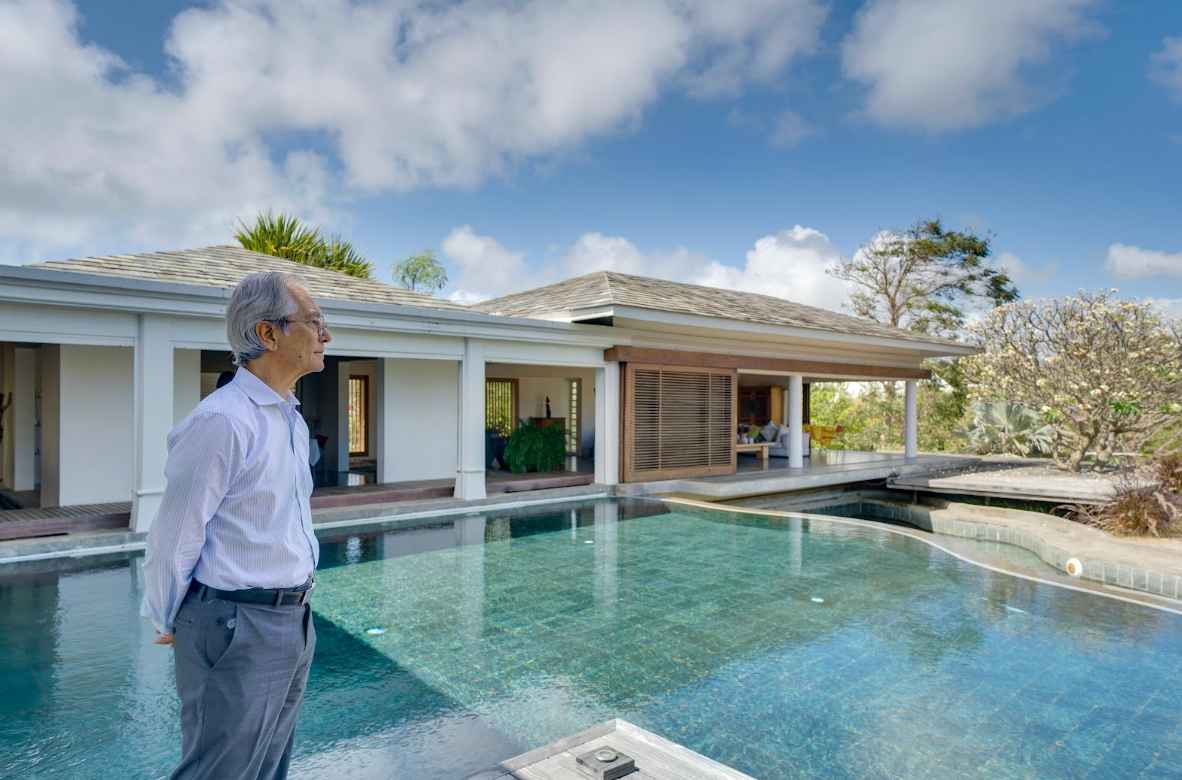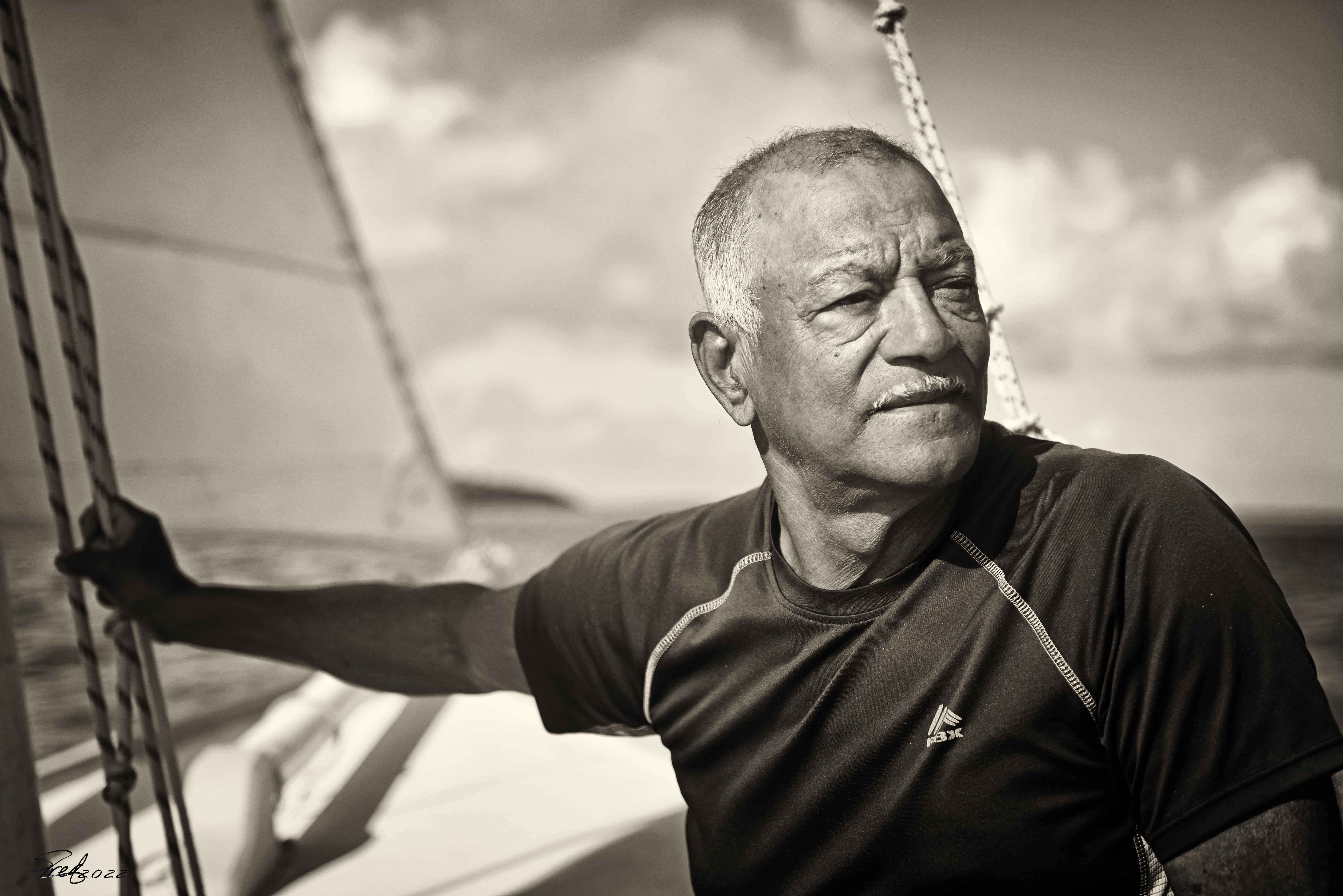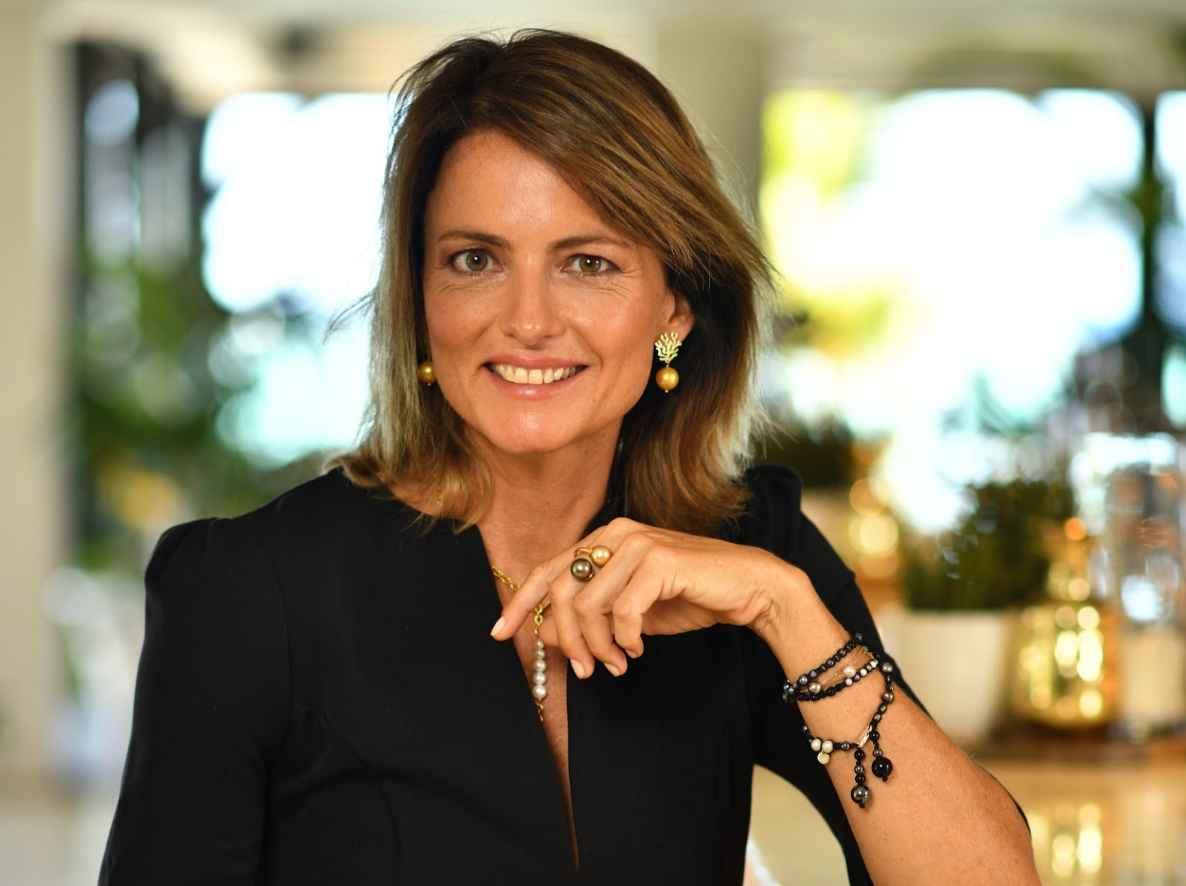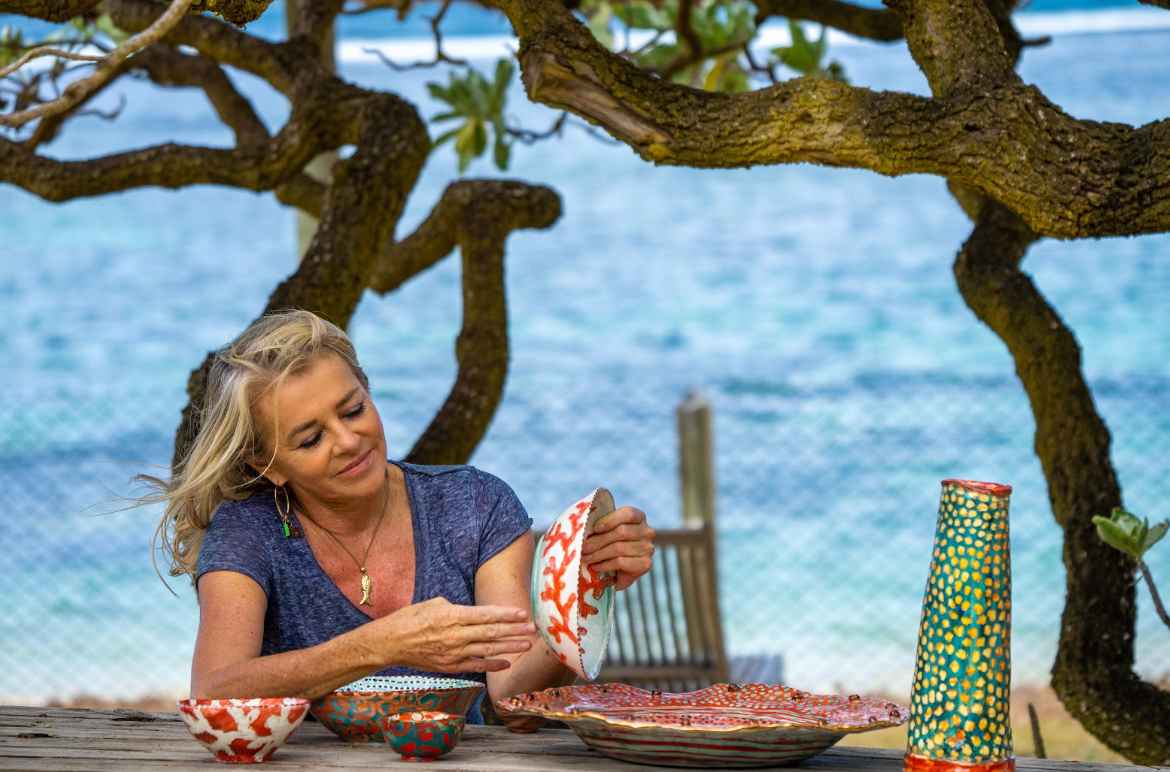2022-10-19
Gaetan SIEW, the visionary architect
We had the chance to meet Gaëtan Siew in his beautiful home in Calodyne. A house designed according to his architectural ideas: visionary and pure.

Can you give a quick overview of your background?
Born in Mauritius. Studied architecture in Marseille. The narrowness of the country, of the island, has always made me want to see beyond our borders.
My involvement in professional architectural organizations took me first to Africa, then to the world presidency of the IUA (International Union of Architects) - 3 million architects in 130 countries - in 2005.â¯This period was rich in encounters, travels, involvement in major global issues; climate change, cultural diversity, education of the profession etc, through international institutions (UNESCO, UN-Habitat, WTO, etc). At the same time my firm started working in Africa and the Indian Ocean.
Then I was sucked into a set of entities working in the same direction - Future Cities in London, Tsinghua-Beijing University, ETI Chair - Panthéon Sorbonne. In Mauritius, always in parallel, I worked for the setting up of national institutions and projects of national scope - Construction Industry Development Board, Smart Cities with the EDB, Port-Louis Development Initiative with the private sector.
What inspires you?
Over time, I have come to realise there are three key components to any inspiration.
The first is travelling. I am an unrepentant traveller, always ready and curious to go anywhere, even if it is to visit a country for the second or third time. I always discover something new during my trip; another point of view, a different angle, a new situation... Cultures from all over the world interest me and make me more curious. An architect who travels has eyes that scrutinise everything he sees; buildings, spaces, people, traditions, colours, fragrances... Sitting at the terrace of a café, observing passers-by, imagining their thousand and one stories..., is one of my favourite pastimes!
People watching. This is the second aspect I use in all my projects. There is a psychology of humans and societies that naturally serves the work of the architect, constituting the spatial envelope of all human activity.
My third and final inspiration comes from books, something instilled by my wife Pascale, who has made it a profession. Books use words, vocabulary, giving room to the imagination to shape these events and situations. These same words inspire different spaces depending on the mood; books have this power to provide each and every one of us with our own cosy universe.
What is for you the perfect place for architecture in the world?
This is a difficult question. I love to travel too much to be able to restrict my choice to one destination.
Dining al fresco in Barcelona's Barrio Gothic. Searching for old scrolls at the Shi Yuan Men Gate in Xi'an. Getting lost in the alleys of Syracuse, Sicily. Discovering the art of bathing like Alexandre Dumas in Tbilisi, Georgia. Committing a crime of lèse-majesté by asking for more Kobe beef at a banquet in Kyoto. Crossing the Altyn Arashan on horseback in the untouched steppes of Kyrgyzstan. Descending into the Roman water cisterns in Istanbul. Lunching a feijoada on Saturday at Largo do Boticario in Rio de Janeiro. Seeing the sky in Hoi An lit up with lanterns.
The list is too long and wonderful. It is very difficult to choose.
What is the project you are most proud of?
Three projects give me great satisfaction.
The Institut Français de Maurice, regrouping all of the country’s cultures under one roof, is an extremely lively project despite the years.
The Oberoi Hotel, for its scale and integration with nature.
And an urban project, the Bank of Mauritius, with the Governor’s offices located on the 22nd floor. You can have lunch while admiring the Gunner’s Quoin in the middle of Port Louis, it's exceptional!
These three projects, although very different, present an eclecticism that is dear to me.
What else would you like to bring to Mauritius?
Two projects are dear to my heart.
The first one goes back ten years ago but without success thus far. It would imply transforming the Port-Louis' Granary into a cultural window on the world, a place where culture would be expressed in all its forms. Dance and music would, for example, blend all cultures from Asia, Africa and Europe - a platform promoting cultural mixing, for a better tomorrow.
The second project would be to connect Port Louis to Grand Bay through a metro on wheels.
What was your main objective throughout your career? Was there a common thread to your work, a crazy desire that motivated you all along?
“A journey of a thousand miles begins with a single step”, says the Chinese proverb.
Doing better each time, pushing through, overcoming obstacles - everything was done gradually; one idea led to another, creating something that enriched and often made it real.
Or do you take the projects one by one without knowing what tomorrow will bring?
The projects came one by one because Mauritian society was slowly emerging from its past in search of an unknown future. It is still searching for that identity.
I think it's because I was, and still am, on that path, creating passages, opening some new perspectives. We discovered another way of living, a harmonious integration with the weather, the climate, the nature.
Do your creations all have something in common?
Once completed, each project has its own identity. If we get into the details, however, there exist some constants around the organisation of spaces.
As far as possible, we ensure there is cross ventilation - a room where nature is visible on the two facades, creating a seamless connection between interior and exterior spaces, hence better integrating the house into its garden.
There is also some sort of fluidity between the different rooms, favouring screens and protected passages to actual doors.
These few principles do guide our design, but it is obvious that outside of residential architecture, other imperatives are just as important.
You have travelled extensively to understand the problems facing many societies around the world. How has it influenced your work?
I have a passion for cities and their people. I started out as an architect, whose job is to solve a particular problem by providing a harmonious and pleasant solution - a welcoming place to conduct a specific activity.
I naturally went from the house to the city, from the cell to the urban space as a whole. All human activities happen in places designed and built to accommodate them. My trips were conducted not as a tourist but as a travelling architect, often with key partners on the spot; other architects, mayors, city professionals..., who have opened my eyes and ears. These encounters have been crucial for my career and my involvement in the development of urban spaces was gradual and natural.
For example, the day water came to the tap in Kibera, a slum of one million people in Nairobi, little girls started going to school instead of fetching water every morning. A generation later, these young women have an education; they have fewer children, they have jobs, and so on. These small events definitely add up to the benefits brought about by the city’s solutions.
The trip that has made the biggest impression on me is the trip of a lifetime. The Silk Road from Istanbul to Xi'an in China with my son. 18,000 kilometres among the local population, living in their homes, like them, for three months.
How has your profession evolved in the face of environmental constraints? How in your opinion should we approach the architecture of the future?
Architecture has always been able to adapt and integrate with nature. This was visible across the world through the traditional habitat. This architecture knew how to integrate into its natural environment by respecting natural resources with sobriety.
Then technology arrived and this traditional know-how was replaced and forgotten. For example, the use of air conditioning in favour of good natural ventilation in tropical places.
Today, all countries are going back to these basic conditions - some out of conscience, others for financial reasons, and others still, out of necessity.
The building industry is responsible for 39% of global carbon emissions, it is crucial for architects to have their say!
Is it really possible to combine new buildings with ecology?
This question is partially answered above.
Responsible design of any living space can save a lot of money. Sustainable by design and without technology! I can't thank one of my architecture professors in Marseille in 1974 enough for having already taught us Bio-Climatic Architecture.
We have always done it but sometimes without knowing it like Monsieur Jourdain in the Bourgeois Gentilhomme.
As an architect, you must love beautiful real estate. What kind of house do you call home?
Some people say a house is not just four walls and a roof, but the space contained within those elements. It is that intangible space that brings comfort and the warm feeling of living in an exceptional place.
With a climate like ours, in tropical latitudes, this translates into a permanent visual contact with nature - a total ambiguity between interior and exterior spaces, characterised by a lush and exuberant tropical flora.
I particularly like this Japanese approach that reduces to a minimum the furniture and objects to leave only the essence, the essential: emptiness to connect the whole!
Spaces are fluid and communicate with each other through screens and vegetation - even the bathrooms seem to connect with the garden.
What was your favorite country to work in?
With hindsight, with time, I have learned that the most difficult, the most delicate part of every profession has nothing to do with technique or financial matters but remains human relations. To be Mauritian is to be both from here and from elsewhere. This is what has allowed me to better understand each of its cultures. Anglo-Saxons are very pragmatic and down to earth with a clear distinction between work and social or family life.
The Latins and the French find this contact, this personal relationship, essential for doing business. The business lunch is an essential ritual for establishing these privileged moments.
In Asia, the observation phase can be long, discreet and silent before the relationship of trust is established.
In Africa, intuition is essential and if the first contact is happy, everything goes smoothly and with great generosity. You must be adopted. It is understood that these are clichés, but in general they are close to reality. All this to say that I have enjoyed working in many countries. From Taipei to Sao Paulo, from Rotterdam to Antananarivo, from Cotonou to London. Great listening, understanding and complicity.
You are very involved in the Mauritian political and economic life, aren't you?
I am extremely interested by the city and its architecture.
In ancient Greek, “polis” means city and politics is the management of the city.
The city is a human and social structure. Shakespeare said: “What is a city, but its people?”. This is still true today, and it is in this direction that my involvement with the city and its architecture has its meaning.
What is your next project, whether personal or professional?
It is often said that architects have a hard time stopping - I am no exception! I need sport, physically as well as intellectually, and architecture is an extremely exciting sport.
.jpg)

